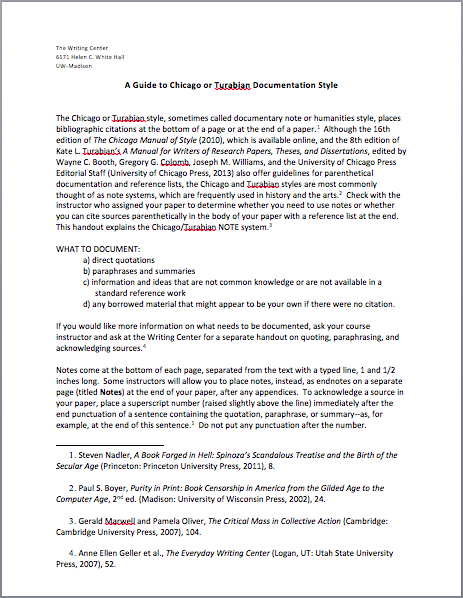Chicago Manual Of Style Citations - are an essential part of academic writing. Understanding how to format your citations properly is crucial in ensuring that your work is well-researched and accurately cited. In this post, we will be exploring various examples of Chicago Manual of Style citations, including in-text and bibliography citations, as well as providing tips and ideas for how to implement these citations effectively in your work.
Chicago Manual of Style Citation Example In Text
Image Source: блог

One of the most common ways to format citation in academic writing is through in-text citations, where you place a reference to a source directly within the text. When using Chicago style in-text citations, you will typically include the author's last name and the publication year in parentheses, separated by a comma, after the referenced sentence or phrase.
For example:
"According to Smith (2019), the phenomenon of climate change has had a significant impact on global weather patterns."
If the author's name is already mentioned in the sentence, you can simply include the year of publication in parentheses:
"Smith (2019) suggests that the phenomenon of climate change has had a significant impact on global weather patterns."
Chicago 16th & Turabian 7th Edition - Citation Guide
Image Source: Daniel Library
If you are using Chicago style for your citations, it is important to make sure that you are using the correct edition of the style guide. The 16th edition of the Chicago Manual of Style is generally used for books, articles, and other works in the humanities, while the Turabian 7th edition is often used in the social sciences.
When using the Chicago Manual of Style, there are two main types of citations that you will use:
- Author-Date system: This system uses the author's name and the date of publication in parentheses directly following a quotation or paraphrase.
- Notes and Bibliography system: This system relies on footnotes or endnotes and a bibliography to provide full source information for each citation.
Pin by Ann-Kristine Hald on Study Tips
Image Source: Ann-Kristine Hald
One important aspect of using Chicago style in your writing is understanding how to format your citations correctly. This includes properly using punctuation, italicizing or underlining titles, and following the correct order when listing the various components of a citation.
For example, a citation for a book using the Notes and Bibliography system might look like this:
Author's Last Name, First Name. Title of Book. Place of Publication: Publisher, Year of Publication.
Smith, John. The History of the United States. New York: HarperCollins, 2018.
The Chicago Manual of Style Online - Chicago-Style Citation Quick Guide
Image Source: The Chicago Manual of Style Online
In addition to understanding how to properly format your citations, it is also important to know how to find the necessary information to include in your citations. This can include author names, publication dates, page numbers, and other bibliographic information.
If you are struggling to find the necessary information for a particular source, it can be helpful to consult the Chicago Manual of Style Online, which provides a comprehensive guide to citing sources in Chicago style. The Chicago-Style Citation Quick Guide is also a helpful resource for quickly looking up the correct citation format for a particular source.
Chicago Manual of Style Citation Example
Image Source: John Stamets

Another important aspect of properly using Chicago style citations is avoiding plagiarism. This means ensuring that you properly attribute any sources that you use in your work, whether through direct quotations or paraphrasing.
In addition to providing citations for your sources, it is also important to properly format your bibliography or works cited page. This typically involves listing sources in alphabetical order by the author's last name and following specific formatting rules for each type of source, such as books, journal articles, and online sources.
Tips and Ideas for Implementing Chicago Manual of Style Citations
- Stay up to date with the latest edition: As we mentioned earlier, it is important to make sure that you are using the correct edition of the Chicago Manual of Style or Turabian guide for your citations.
- Make use of citation managers: There are many tools available, such as Zotero and EndNote, that can help you manage your citations and ensure that they are properly formatted.
- Double-check your citations: Before submitting your work, make sure to carefully review all of your citations to ensure that they are accurate and properly formatted.
- Ask for help if needed: If you are unsure about how to format a particular citation or are struggling to find the necessary information, don't hesitate to ask your instructor, librarian, or a writing tutor for help.
Conclusion
Chicago Manual Of Style Citations can be a challenging aspect of academic writing, but with the right tools and resources, it is possible to effectively and accurately cite your sources. By properly formatting your citations and staying up to date with the latest edition of the style guide, you can ensure that your work is well-researched and properly attributed.
Remember to take the time to carefully review and edit your citations before submitting your work, and don't hesitate to ask for help if needed. With these tips and ideas, you can effectively implement Chicago style citations in your writing and take your academic work to the next level.
Read more articles about Chicago Manual Of Style Citations
